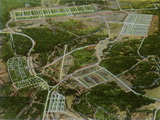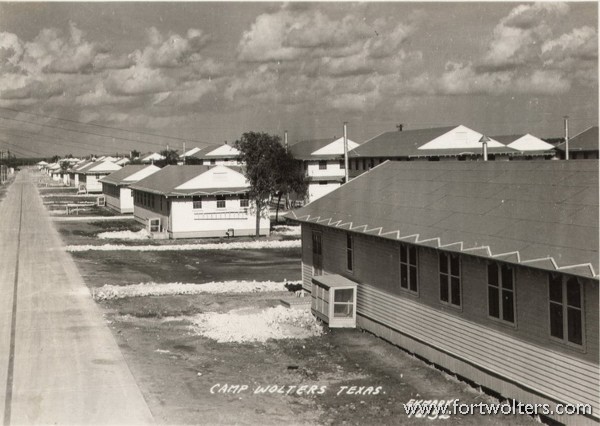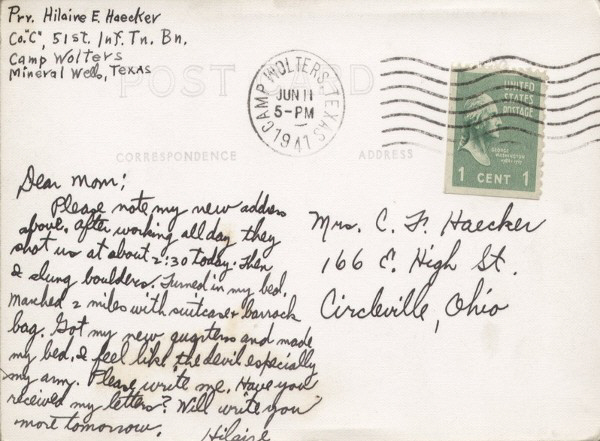
- Home
- Camp Wolters
- A Model Soldier
- Camera Trip Through Camp Wolters
- Camp Wolters Longhorn
- Camp Wolters Ephemera
- Camp Wolters Guide
- Camp Wolters IRTC
- Camp Wolters Postcards
- Camp Wolters Unit Photos
- Christmas Menu
- Present Site of Camp
- Southwestern Bell Booklet
- Camp Wolters Souvenir Book
- IRTC Doughboy
- Soldier - Billy S. West
- Soldier Artist
- Soldier's Letters
- Soldier's Photos
- Fort Wolters
- United States Primary Helicopter/School
- Flight Training
- ORWAC Class 68-24
- WORWAC Class 67-5
- Training Aircraft
- Stagefields and Heliports
- Southern Airways of Texas
- USAPHS Commandants
- Battery D, 4th Missile BN 562nd Arty
- 328th U.S. Army Band
- Det. 20, 16th Weather Squadron
- Guide and Directory
- Crash Rescue Map
- Dave Rittman Photos
- Fort Wolters Photo Gallery
- Fort Wolters Ephemera
- Wolters Air Force Base
- Fort Wolters Main Gate
- Around Mineral Wells
- Texas Forts Trail
- Vietnam
- Sitemap
- Links
- About the Site
- What's New
Vital Training Center built on what was a Sea of Mud Camp Wolters was officially turned over to the Army at 4:45p.m. on March 22, 1941, in a ceremony near the I.R.T.C. headquarters. Col. Fay W. Brabson, then Camp Commander, accepted nearly 5,000 keys to Wolters buildings in a ceremony broadcast by a Fort Worth radio station. Actually, some 7,000 men were already there when the Army took over Camp Wolters. Cadremen had been there more than a month, and the 58th Battalion was filling with the first selectees. The first selectees arrived on March 13, 1941, and were assigned to Companies A and B of the 58th Battalion. The early arrivals found warm and comfortable barracks and adequate provisions for their feeding and clothing, but their company areas were islands in a vast quagmire of mud littered by odds and ends of construction material and churned by heavy trucks and tractors. Ground for Camp Wolters had been broken Nov. 12, 1940, but a record rainy spell kept work almost at a standstill until the beginning of 1941. During peak employment, more than 19,000 men worked at top speed to have the camp ready when the first soldiers arrived. When training began there were still no sidewalks and few gravel roads. Extremely heavy rains continued throughout the Spring, and the first few months of training consisted largely of wading through ankle-deep mud by day and cleaning shoes and equipment at night. Four officers commanded Camp Wolters in its first year. Colonel Brabson was commander until Brig. Gen. William H. Simpson arrived on April 5, 1941. General Simpson was here until October 14, 1941, when Col. Henry C. McLean took over command until Brig. Gen. E.F. Reinhardt arrived November 9, 1941. Under these officers the camp was expanded and improved in size and efficiency. Even after the camp was activated, millions of dollars were later spent to clean and beautify the grounds and add new sidewalks, roads, ranges maneuver areas and buildings. Even more impressive than these additions to the physical equipment was Camp Wolters rise to national prominence as a great reservoir of trained infantry personnel. Techniques of training developed or improved at Camp Wolters won commendation from high War Department officers, and officers and enlisted men were widely used to staff new or expanding camps. Source: "The Camp Wolters Longhorn," p.1, Vol.1 No.18, March 19, 1942. |
|
| Aerial view of Camp Wolters fulfilling its role as the largest infantry replacement training center.
|
|
Division Area 1, 2 and 3 are in the top left of postcard titled "Aerial View of Camp Wolters" above.
|
|
Division Area 4 and 5 appears in the upper right of "Aerial View of Camp Wolters" above.
|
|
Hospital Division appears in the lower left of "Aerial View of Camp Wolters" above.
|
|
Card written from Camp Wolters to friend or family over 60 years ago
|
|
 |
|
|
|
| Prv. Hillaire E. Haecker Co."C", 51st. Inf. Tn. Bn. Camp Wolters Mineral Wells, Texas Dear Mom: Please note my new address above. After working all day they shot us at about 2:30 today. Then I slung boulders. Turned in my bed, marched 2 miles with suitcase & barrack bag. Got my new quarters and made my bed. I feel like the devil especially my arm. Please write me. Have you received my letters? Will write you more tomorrow. |
|
